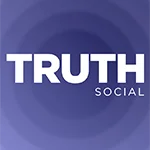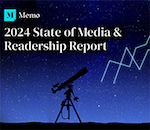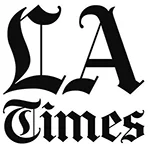A panel from GE Digital, Levick, Digiday, The Daily Beast and Cision will examine on March 29 journalism’s “credibility crisis” including “loss of public trust” and “shrinking deadlines.”
The session, which takes place in New York, will be webcast at 2 p.m. ET and is free but only to those who register.
|
|
Panelists are Richard Levick, chairman and CEO of Levick; Katrina Craigwell, VP of marketing innovation, GE Digital; Chris Lynch, chief marketing officer, Cision; Brian Braiker, executive editor, Digiday, and John Avlon, editor-in-chief and managing director, The Daily Beast.
Cision’s annual survey of more than 1,550 North American journalists and “influencers” found that while people have more faith in earned rather than paid and owned media, “journalists perceive they are now struggling to maintain the public’s trust.”
Confidence in the media “eroded due to the presidential election and other factors,” it says. "Findings illustrate power of PR in helping journalists to provide relevant, authoritative and accurate information."
Cision notes that its survey results align with the 2017 Edelman Trust Barometer which found that public trust in the media dropped to 43%, a level almost as low as that of government officials, who have the lowest rating of 41%.
Facebook Is Tops; “Branded” Content Dips
Cision found that “Facebook still dominates as the most valuable channel for audience engagement” and the “market is moving away from sponsored content and native advertising and towards mobile compatibility, video and image-based content, social media as a journalistic resource and influencer marketing.”
Journalists want story ideas from “credible industry experts,” says Cision.
Helpful to them are Cision units such as Help a Reporter Out (HARO) which spurs feedback from the public; PR Newswire for Journalists (PRNJ), and ProfNet.
HARO has more than 475,000 sources and more than 35,000 journalists as participants.
PRNJ is described as “The easiest place for journalists to find news and contacts.” Reporters can sign up for email delivery of the types of news they want.
ProfNet is an online community that gives reporters access to expert sources. It was founded in 1992 and acquired by PR Newswire in 1996. Between 100 and 200 reporters use ProfNet daily.
 |
Reporters and other professionals – such as meeting planners, authors, bloggers, publishers, government officials, and academic and corporate researchers – may connect with experts and speakers via four types of interactions: general queries, speaker queries, targeted queries, and roundups.
Journalists Are Under Pressure
“A combination of lack of resources and the fast pace of new media is pushing some writers and publishers out of the industry,” says Cision. “Journalists are being asked to do more with less resources, often being forced to make cuts in fact gathering and investigative journalism. The disruption of media business impacts journalists’ productivity and performance, making the relationships between brands, trusted newswires, journalists and influencers even more vital than ever.”
Cision also notes that 81% of senior marketers believe that earned media is more effective than paid media. “Communications executives are starting to recognize the power of earned media to share their brand’s message and increase market share in this changing consumer environment,” it adds.
Journalists List Challenges
The 2017 Cision survey, which asked journalists what are the greatest challenges to media, found that “regaining public trust” was uppermost in their minds which were linked with the “rise of misinformation and fake news.”
They called on fellow journalists not to accept reporting of other media but to double-check all facts themselves.
Cision’s State of the News Media report found that “veterans with years of domain knowledge have in some cases exited the business. The influx of newer talent might be cheaper, but the level of depth with which they may pursue a story has changed to suit business needs.”
A fear of some reporters is that “a loss of ad revenue and journalism resources have driven down the quality of work, which has enabled some facets of the media to grow while also leading to a decline in professional standards.”
As the traditional media pool shrinks, “it’s more important than ever that communications professionals know which media they are targeting and that the topics are most important to them,” says Cision.

 Clockwise from top: Chris Lynch, chief marketing officer, Cision; Katrina Craigwell, VP of marketing innovation, GE Digital; John Avlon, editor-in-chief and managing director, The Daily Beast; Brian Braiker, executive editor, Digiday; Richard Levick, chairman and CEO of Levick
Clockwise from top: Chris Lynch, chief marketing officer, Cision; Katrina Craigwell, VP of marketing innovation, GE Digital; John Avlon, editor-in-chief and managing director, The Daily Beast; Brian Braiker, executive editor, Digiday; Richard Levick, chairman and CEO of Levick
 Trump Media & Technology Group today reported a $58.2M net loss on $4.1M in 2023 revenues, a disclosure that drove its stock price down 22.6 percent to $47.96.
Trump Media & Technology Group today reported a $58.2M net loss on $4.1M in 2023 revenues, a disclosure that drove its stock price down 22.6 percent to $47.96. Barry Pollack, an attorney at Wall Street’s Harris St. Laurent & Wechsler, has registered Julian Assange as a client with the Justice Dept. “out of an abundance of caution.”
Barry Pollack, an attorney at Wall Street’s Harris St. Laurent & Wechsler, has registered Julian Assange as a client with the Justice Dept. “out of an abundance of caution.” Paramount Global to slash 800 jobs in what chief executive Bob Bakish calls part of an effort to “return the company to earnings growth"... Rolling Stone editor-in-chief Noah Shachtman is exiting at the end of the month due to disagreements with chief executive Gus Wenner over the direction the magazine is taking... The New York Times broke the $1 billion barrier in annual revenue from digital subscriptions in 2023... Press Forward is investing more than $500 million to strengthen local newsrooms.
Paramount Global to slash 800 jobs in what chief executive Bob Bakish calls part of an effort to “return the company to earnings growth"... Rolling Stone editor-in-chief Noah Shachtman is exiting at the end of the month due to disagreements with chief executive Gus Wenner over the direction the magazine is taking... The New York Times broke the $1 billion barrier in annual revenue from digital subscriptions in 2023... Press Forward is investing more than $500 million to strengthen local newsrooms. The majority of news articles are read within the first three days of publication, according to a recent report.
The majority of news articles are read within the first three days of publication, according to a recent report. The Los Angeles Times gives pink slips to 115 people or 20 percent of its newsroom staff... TIME is also laying off about 30 employees, which is approximately 15 percent of its editorial staff... The Baltimore Banner, which was launched by Stewart Bainum in 2022 after he failed to buy the Baltimore Sun, added 500 subscribers per day in the three days following Sinclair Broadcast Group's deal to purchase the Sun.
The Los Angeles Times gives pink slips to 115 people or 20 percent of its newsroom staff... TIME is also laying off about 30 employees, which is approximately 15 percent of its editorial staff... The Baltimore Banner, which was launched by Stewart Bainum in 2022 after he failed to buy the Baltimore Sun, added 500 subscribers per day in the three days following Sinclair Broadcast Group's deal to purchase the Sun.


 Have a comment? Send it to
Have a comment? Send it to 
No comments have been submitted for this story yet.